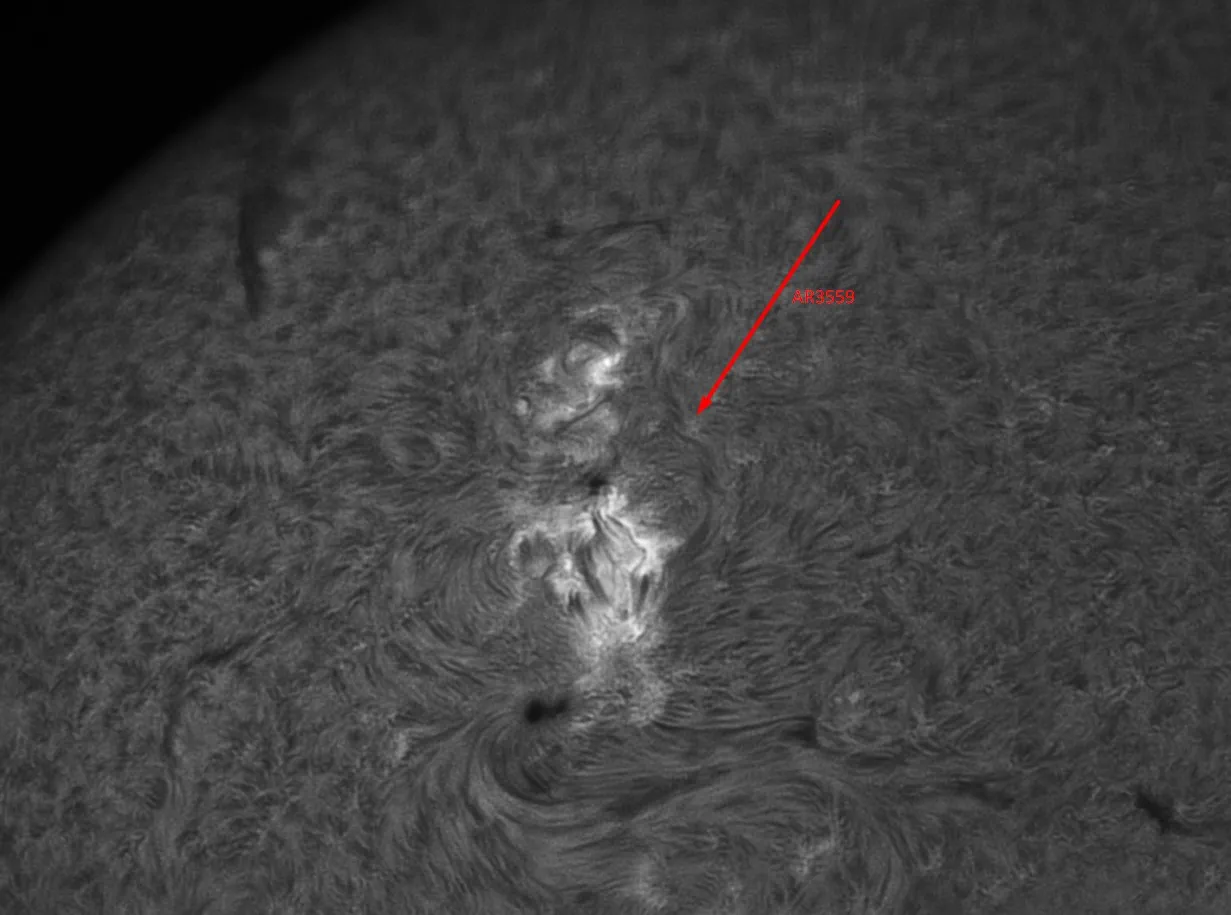Earth in the Crosshairs: Major Sunspot Could Deliver a Strong Blow
A little over three days ago, important solar events unfolded. On February 22nd (Moscow time), the massive sunspot AR3590 erupted twice with powerful X-class flares, with magnitudes of X1.8 and X1.7.
Scientists who observed these events were somewhat concerned but concluded that the Sun had already expended its energy on these flares, as two consecutive flares of this class are quite rare. However, on February 23rd, the same sunspot unleashed the largest event in the past 7 years: an X6.3 flare, which caused extreme ultraviolet radiation, ionizing the upper part of our atmosphere. This radiation led to serious disruptions in radio signals over the Pacific Ocean, the territory of the United States, and Australia. According to some data, it also led to disruptions in the communication of many mobile operators in the affected area. Moreover, the event on February 23rd turned out to be more dangerous, as the flare occurred in close proximity to the Sun-Earth line, when the flux can be directed squarely towards us. However, it should be noted that this time, the inhabitants of Earth were lucky, and as a result of the flare, there was no plasma ejection, i.e., the ejection was localized in the Sun's corona. Sometimes, solar flares occur in which no coronal mass ejection is ejected. There are about 10% of such events among the total number of solar events. Otherwise, our planet would have been threatened by a severe G4 magnetic storm.

So, what is happening now with the ominous AR3590 sunspot? It is growing. If last week the size of the sunspot group exceeded the size of the Earth several times, then over the past weekend, AR3590 has significantly expanded. Even enthusiasts studying solar processes can observe it using solar eclipse glasses. AR3590 is currently the largest sunspot of the 25th solar cycle. Researchers have even compared it to the Carrington Event of September 1859 in terms of surface area: this spot is 60% smaller than the Carrington event.
For reference: On September 1, 1859, the most powerful solar storm in human history hit our planet. The "Carrington Event" is named after the British scientist Richard Carrington, who witnessed a provocative solar flare that caused auroras from Cuba to Hawaii. In America and Europe, the glow was so bright that newspapers could be read at night. As a result of the storm, telegraph systems throughout Europe and North America were disabled. Sparks flew from the equipment, and many operators received electric shocks. Disconnected devices continued to send intermittent signals. In some places, sparks and short circuits caused fires. Such strong storms occur on average once every 500 years.
Currently, it is known that the AR3590 spot has an unstable magnetic field "beta-gamma-delta," containing energy for several X-class explosions. Is it preparing for a new X-ray flare? If so, the flare will be geo-effective, as it is directed directly towards Earth. The probability of impact is 99%. The threat of flares will be relevant for several more days until Thursday or Friday, until the spot moves out of the danger zone.
It is worth noting that the Sun is ahead of scientists' forecasts for activity. Recall that the 25th solar activity cycle began in 2019 and is expected to last until 2030. Initially, its peak was forecasted for mid-2025, but the Sun is already showing significant activity. Less than 2 months have passed since the beginning of the year, and already 5 X-class flares have occurred. According to scientists, the main reason for the sharp increase in solar activity lies in high-energy cosmic impact, which has affected the entire Solar System. The Sun, as the main battery, receives additional energy and, accordingly, behaves unstably, discharging excess charge.
Chief forecaster and ideologist of the weather forecast service Pogodnik. Co-author of scientific articles and specialized content for various online media.





